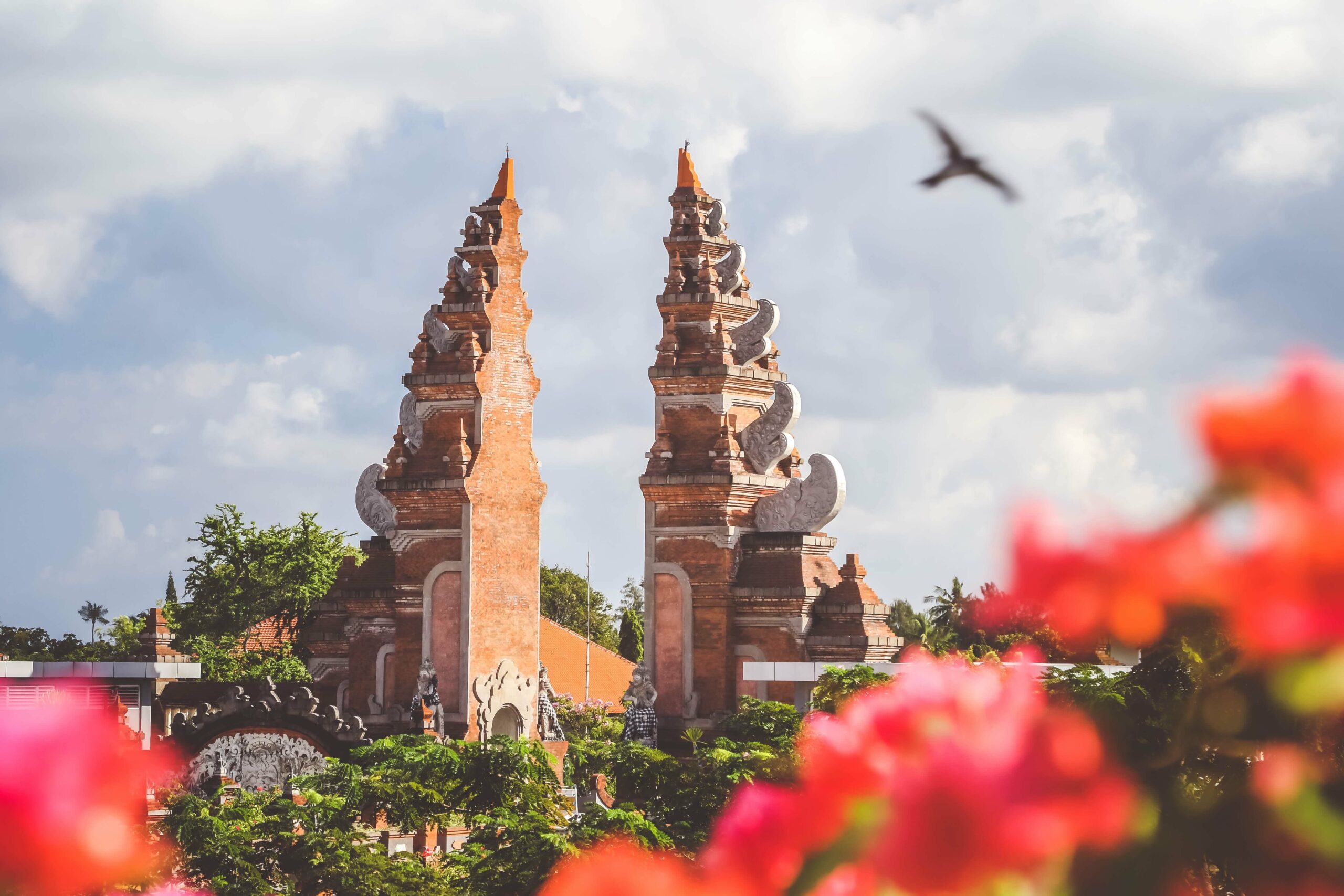Indonesian wedding traditions and rituals are highly complicated and specific. Indonesia is an island nation comprised of over 17,000 tiny islands with more than 300 different ethnic groups.
Because of the varying cultures, not all Indonesian weddings feature the same traditions, but some expectations do overlap.
While the rules surrounding gifts, attendance, and alcohol are usually the same, more specific rituals vary wildly across the country.
14 Indonesian Wedding Traditions and Rituals
1. Extravagant Invitations
Indonesian wedding invitations are extravagant and flashy, especially from brides and grooms in urban areas of the nation. They often have long notes from the couple and their families expressing how much it would mean to them if the invitee attended the wedding.
Sometimes the wedding ceremony and reception have different dates, and most people will not attend. The invitation is typically for the reception itself, not the lengthy ceremony and exchanging of vows.
While families in rural areas with less money will verbally invite people, it’s still a meaningful action. The couple or family members will visit people’s homes and personally invite them, expressing what an honor it would be if they joined in on the celebration.
Even without a physical invitation, being invited to an Indonesian wedding is significant.
2. Plus Ones Welcome
Despite the extravagant and intricate wedding invitations, the couple usually welcomes anyone who wants to join the festivities. When someone receives a wedding invitation, it’s implied they can bring a plus one, such as a romantic partner or friend.
However, the plus one invitation goes beyond this. You can bring a group of friends to a wedding if you want, and you can tag along with friends, even if you didn’t receive an invitation. Indonesian weddings do not typically have per-person meals but offer a massive buffet.
So bringing extra people won’t insult the bride and groom, and they’ll likely welcome your friends or family. Many Indonesian families will even be disappointed or hurt if there is a lot of food left over from the ceremony, indicating a lack of guests or that guests did not enjoy the food.
3. Cash Gifts
Cash, please! Most Western weddings include a gift registry, where guests can purchase items for the new couple that they requested. But because Indonesian couples welcome so many guests, the sheer mass of the presents can be overwhelming.
Traditionally, Indonesian wedding guests would bring dazzling flower arrangements to bless the bride and groom. But the floral gifts were often a way to show one’s wealth, so they could be enormous and take up a ton of space at the wedding and later in the bride and groom’s home.
So it became the norm for Indonesian couples to ask their guests not to bring gifts or floral arrangements. While it may sound like they’re passing on the gifts, there’s a subtext implying they would prefer monetary presents, like cash or checks.
If you’re unsure what to give, the average gift is between 300,000 and 500,000 rupees. In reality, Indonesian couples care more about your attendance than whether or not you present them with a gift.
4. No Thank You Cards
Even if you give a generous and hefty cash gift, don’t expect to receive a thank you card. Some Indonesian families will keep track of who gave what, but they rarely send thank you cards, unless it was an insane amount of money.
Instead of thank you cards following the wedding, couples give wedding favors at the beginning of the reception. The wedding favors can be small fans, key chains, or handkerchiefs.
These wedding favors will have a small thank you attached from the couple, showing their appreciation for your attendance.
5. Grand Entrance
At the beginning of the wedding ceremony, Indonesian couples go all out. The simple entrance of the bride and groom, which occur separately, can take quite some time. Along with a slow and dramatic entrance, many speeches and readings happen during this time too.
While most Western weddings simply have the officiant begin, Indonesian weddings feature long speeches from family members, friends, or elders in the community. The beginning of the ceremony can take hours, so many guests will skip this.
It’s not rude or disprespectful to skip the long ceremony, and people often arrive an hour or less before the reception begins.
6. Dry Weddings
Most Indonesian people are Muslim. Therefore, they abstain from alcohol and other substances. Most Indonesian weddings are completely dry, meaning there is no alcohol. An Indonesian wedding featuring alcohol of any kind is highly unusual.
Some modern Indonesian couples who do not follow the Muslim faith may have alcohol, but in these cases, most Indonesian elders would frown upon this and view it as disrespectful.
7. Lots of Planning
Indonesian wedding planning is not casual. Both families and the couple must agree on every aspect of the wedding, beginning with the wedding date.
From the moment the couple agrees to the marriage, the planning begins. The planning comes early because many Indonesian cultures have complex rituals to arrange. Some of these rituals are discussed below in detail.
8. Pre-Wedding Rituals
Indonesian weddings stretch beyond just the day of the wedding ceremony. Like the three-day celebration, traditional in Javanese weddings, other Indonesian cultures and religions have wedding traditions and rituals that occur long before and long after the ceremony.
Not all of these rituals will occur at every wedding. It depends on the religion of the couple and their family. Below are some Indonesian wedding traditions and rituals that can differ across the nation.
9. Sinamot
Sinamot is a wedding ritual in the Batak Indonesian culture. This ritual is a marriage procession where the bride and groom’s family determine the dowry amount for the bride.
The dowry amount will depend heavily on the couple’s social status, education level, and career. Women with higher social standings and education will get valued with a higher dowry.
The groom’s education level and social status also determine how well he can support his wife and future family. This ceremony is not just about one family giving money to the other. Instead, the ceremony focuses on creating a foundation for a prosperous marriage.
The ceremony can help couples avoid failures and divorces by logically assessing and planning for their financial future.
10. Minangkabau
The Minangkabau tradition is when the bride proposes marriage to the groom rather than the other way around. This tradition has several steps, beginning with the bride visiting the groom’s family and getting permission from her own family.
The two families then exchange heirlooms, showing their agreement on the marriage. These heirlooms act almost like engagement rings. Throughout the engagement, both families bring various gifts like fruits and beverages.
11. Nyantri
Completely different from the Pingitan tradition, Nyantri requires the groom to live in the bride’s home for a few days before the wedding.
The traditions stem from ancient arranged marriages, allowing the couple to become familiar before the ceremony.
Nyantri Today
Modern couples and Indonesian families modified this tradition. Instead of the groom staying in the bride’s home, he spends as much time with her as possible. For this, he may live in her neighbor’s home or close relative rather than staying with her.
12. Lombok
Lombok is a ritual that originated in Indonesia’s Sasak tribe. It requires the groom to kidnap his bride the night before the wedding.
The tradition is complex and intense– so much so that the authorities occasionally become involved. And if authorities catch the groom in the act, he may have to pay a fine.
An Old Tradition
The tradition stems from elopement, despite most couples having permission from their families. The closure of this ritual varies, but usually, the bride’s parents realize she is gone and report the kidnapping.
Once this happens, the groom visits them to discuss the marriage. Some modern couples play with this tradition, but it’s falling out of fashion.
13. Pingitan
This tradition involves the seclusion of the bride before the wedding. The duration of seclusion changes, but it’s often 24 to 48 hours before the wedding.
During this time, the bride is not allowed to leave her home, and no one can visit her unless they are family or in her wedding party. The idea is to keep the bride safe before the wedding while also causing the groom to yearn for his bride more.
Preparation
Brides also use this time in seclusion to prepare themselves physically for the wedding. They may fast, perform spa treatments, drink herbal beverages, and spend time with close family before the wedding.
Nowadays, this seclusion isn’t too long. But once upon a time, Indonesian brides had to seclude themselves for as long as two months!
14. Siraman
One of the most common wedding rituals is the beautiful Siraman ceremony. For this ritual, the groom’s parents shower the couple with flowery water to bless them and offer them love and peace.
It also symbolizes the last time they will be bathed by their parents before beginning their own life as a married couple. The water usually includes rose petals and jasmine flowers. This meaningful ritual occurs a day or two before the wedding.




